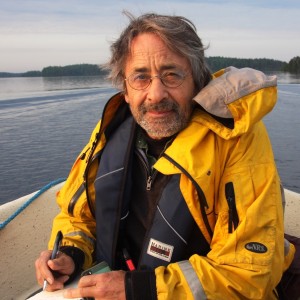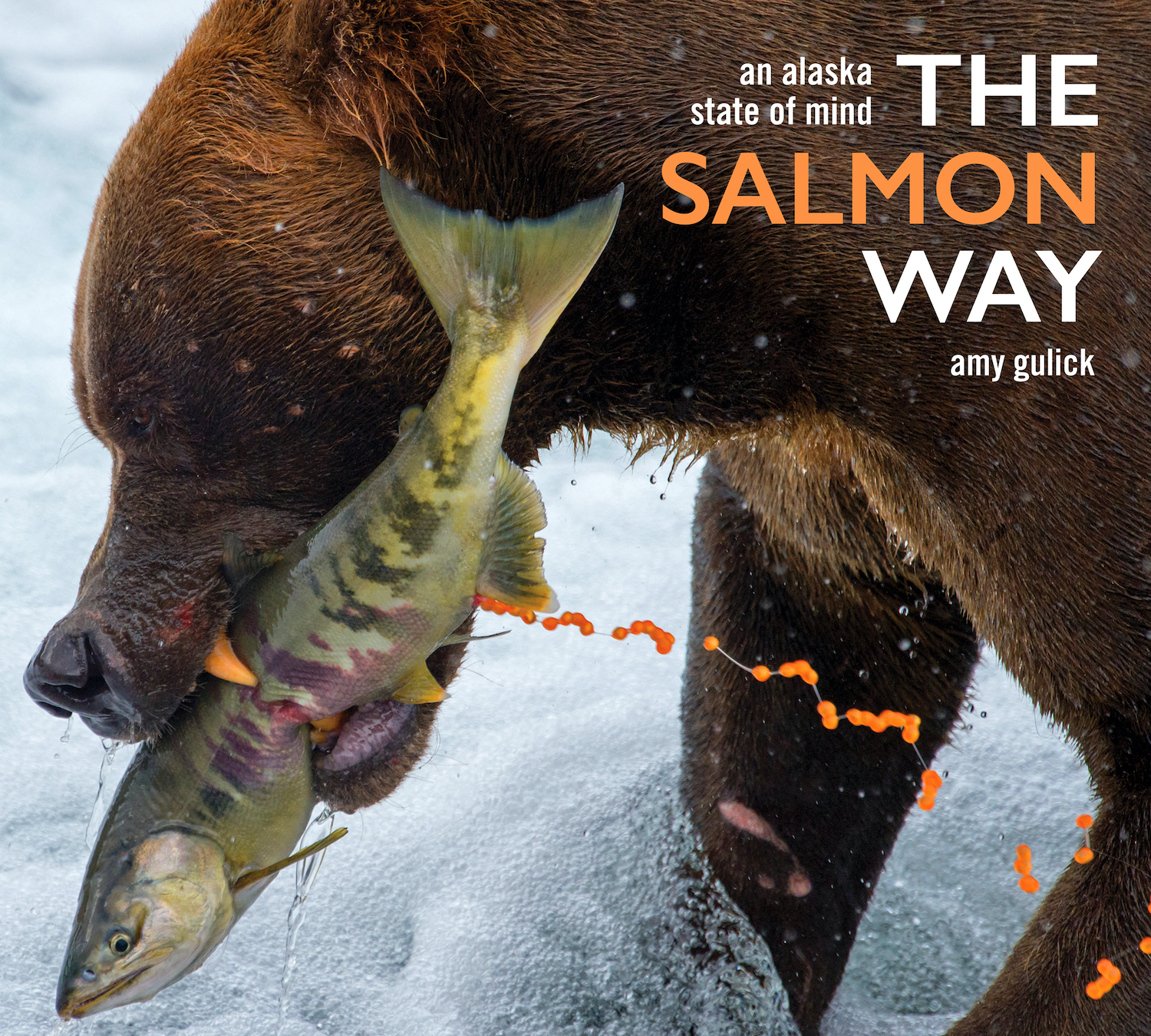I found myself walking around Mexico City with a big square book under my arm, The Salmon Way: An Alaska State of Mind, by Amy Gulick. The cover photo catches people’s gaze in this urban environment – an Alaskan brown bear chomping down on a chum salmon surrounded by the fast water of a river.
In the evening I read the book to my son, in the early morning I read it to myself. It makes me want to drop everything and go to Alaska.
I met Amy Gulick in Seattle, selling her book at the Pacific Marine Expo, and when I circled around to talk to her about doing a review, she was gone, already sold out. It came as no surprise. Through compelling pictures and prose, The Salmon Way captures the connections that the five species of Pacific salmon have with everything Alaska.
Gulick starts her book with a dive into the important commercial salmon fisheries, including interviews with Southeast salmon troller, Eric Jordan, and a chapter called “Red Fever” that covers the Bristol Bay sockeye gillnet fishery. But the book focuses more on connections than harvest tallies.
From her imagery to her interviews, Gulick gets personal and intimate with people, fish, and wildlife. Closeups of salmon eyes, from eggs to a rotting carcass of a spawned-out adult, reveal that these salmon are more than just meat, they are beings with souls that permeate everything Alaska.
Over and over the human voices, Native and newcomer, speak of tradition and a spiritual bond between humans and fish. Michelle Ravenmoon, who returned to her family’s homeland on Iliamna Lake, tells old stories of how her people call the salmon in the spring: “We say look at us we are starving, we are eating plants, please come home and feed us.”
Gulick includes all salmon users in her book, including sport fishermen and the local guides who get their clients onto the massive trout in the rivers feeding Bristol Bay, while keeping them safe from bears. Newcomers to Alaska find their place as well, like a photo of a woman with her baby on her back dip netting salmon for personal use.
The five species of salmon – king, dog, silver, red and humpy, also known as chinook, chum, coho, sockeye, and pink – touch the lives of almost all Alaskans in some ways. The nutrients the fish bring from the sea feed the state’s ecosystem. As Gulick notes, “the salmon are in the trees,” which are fertilized by the excrement of bears and all the wild animals feasting on salmon.
Gulick leaves no stone unturned in her exploration of The Salmon Way, which speaks often of sharing food. Her book shares food for the heart and mind – a vital understanding of human connection to the wild sources of what we eat, and the traditions we build on those connections, passing them on to our children.







